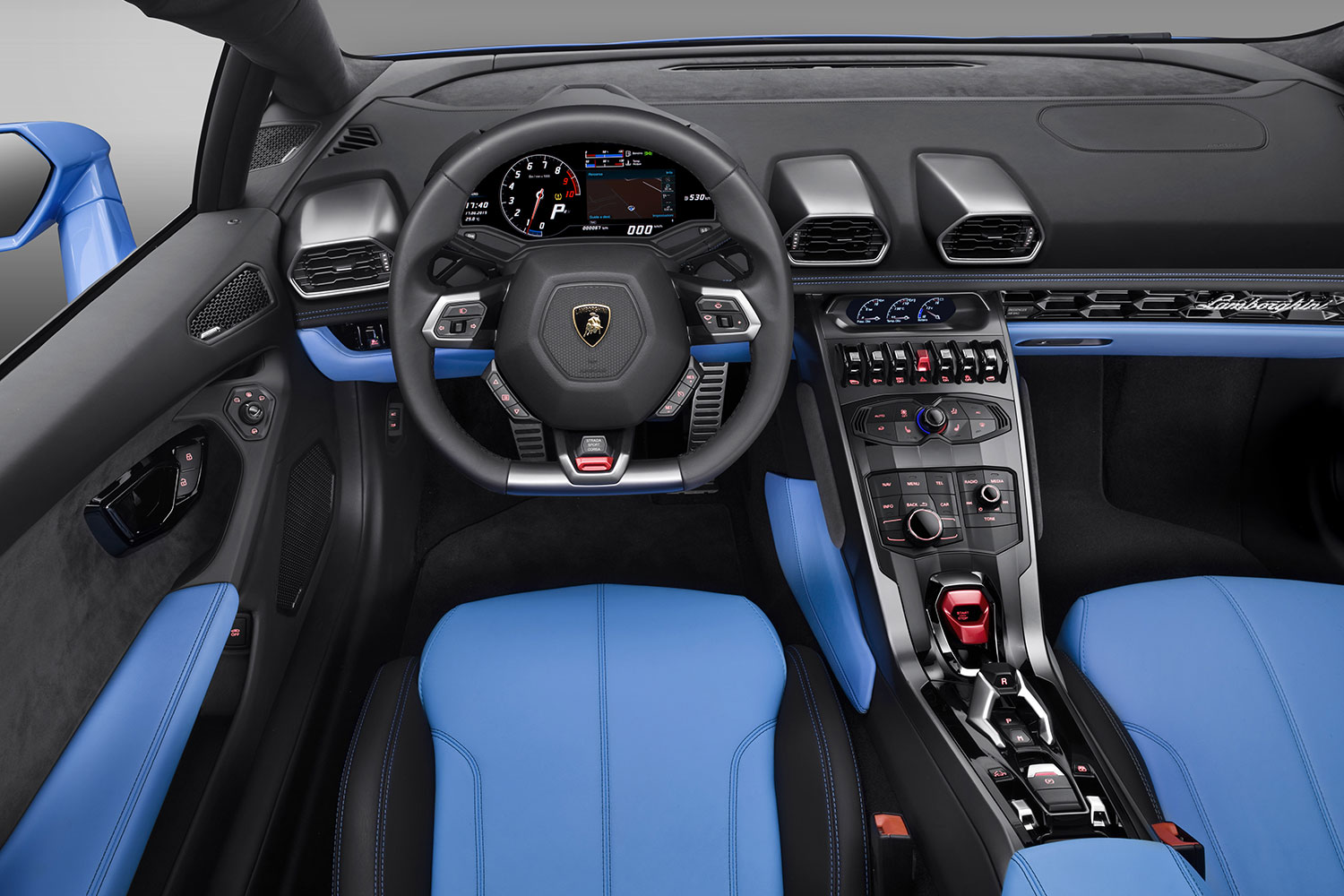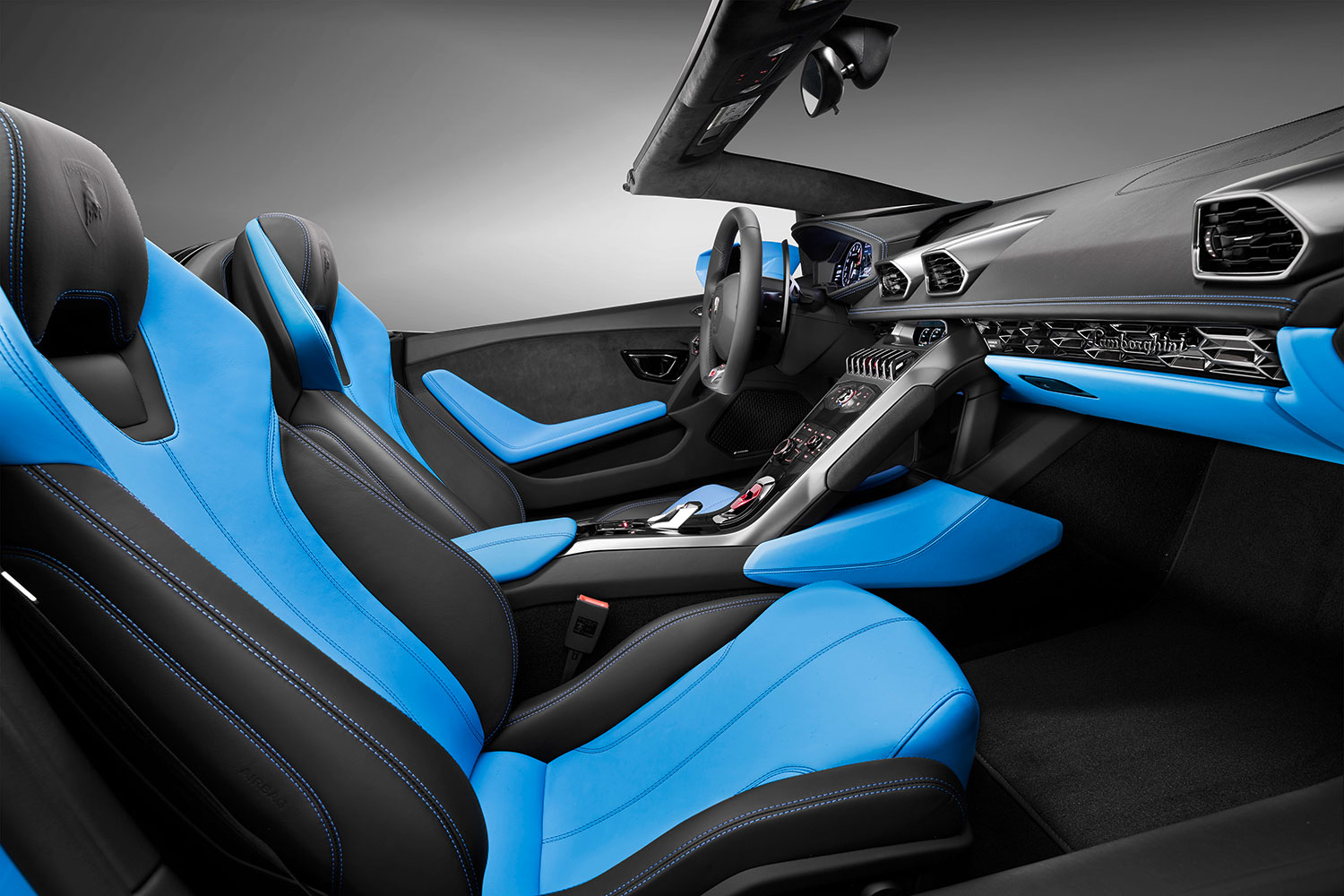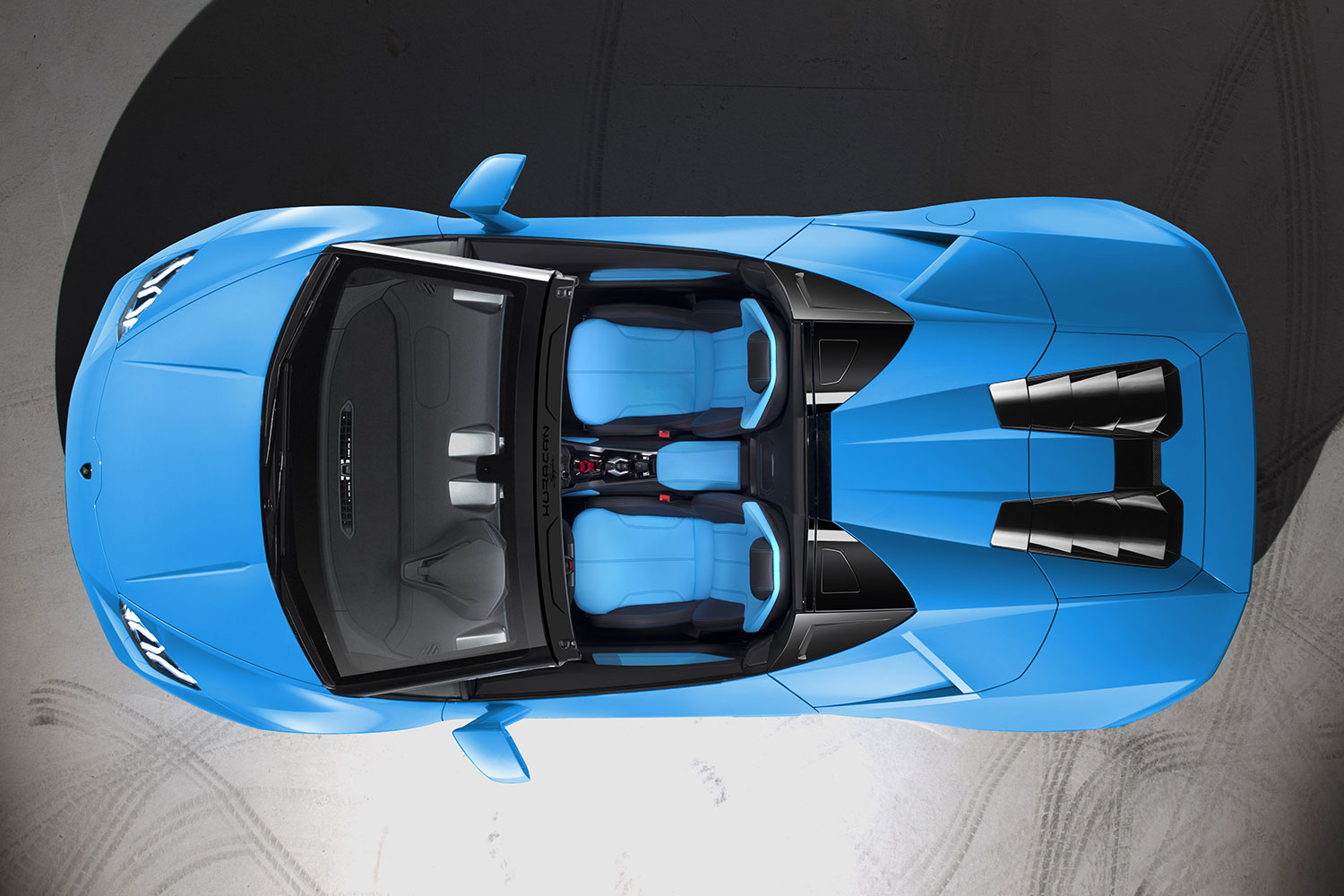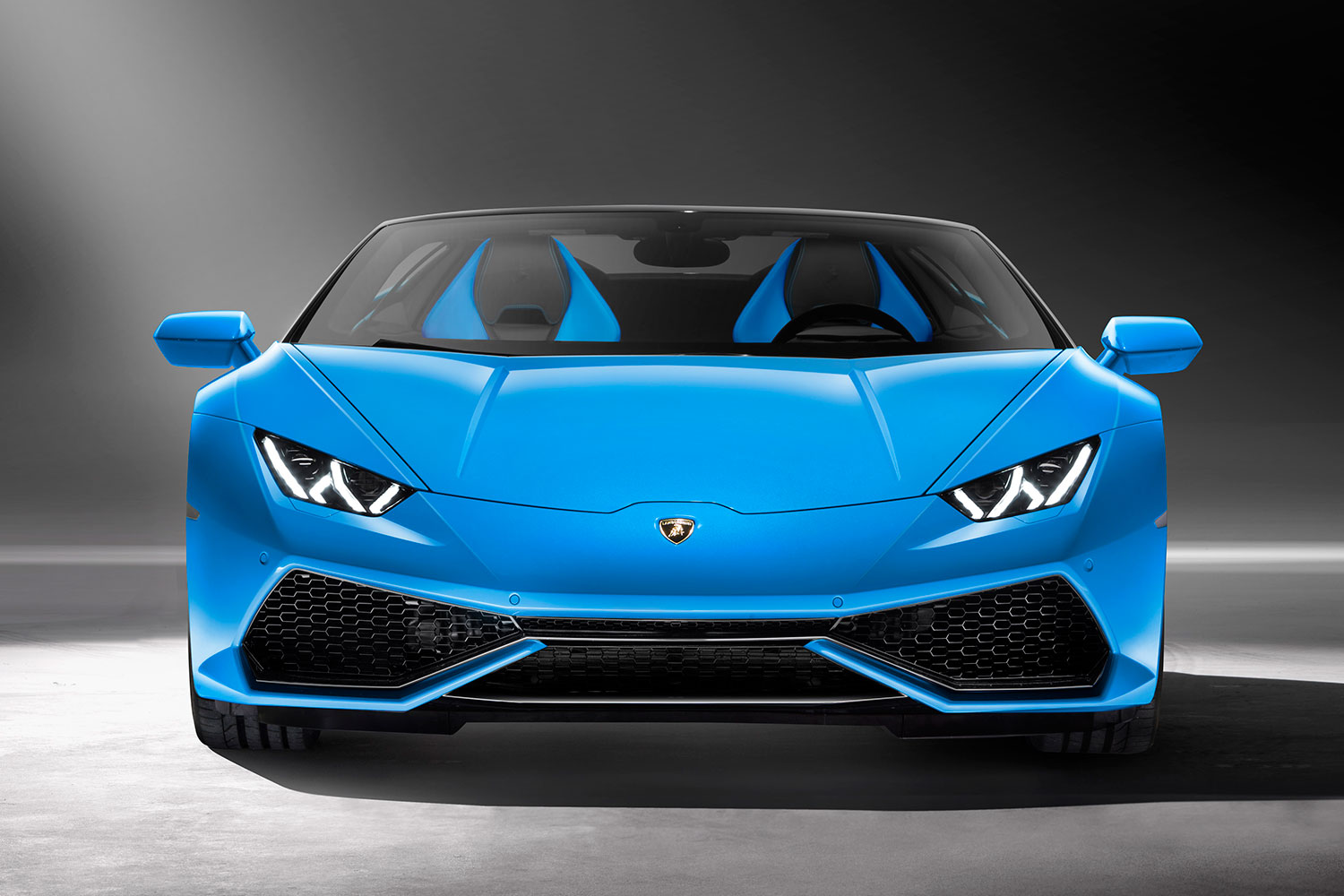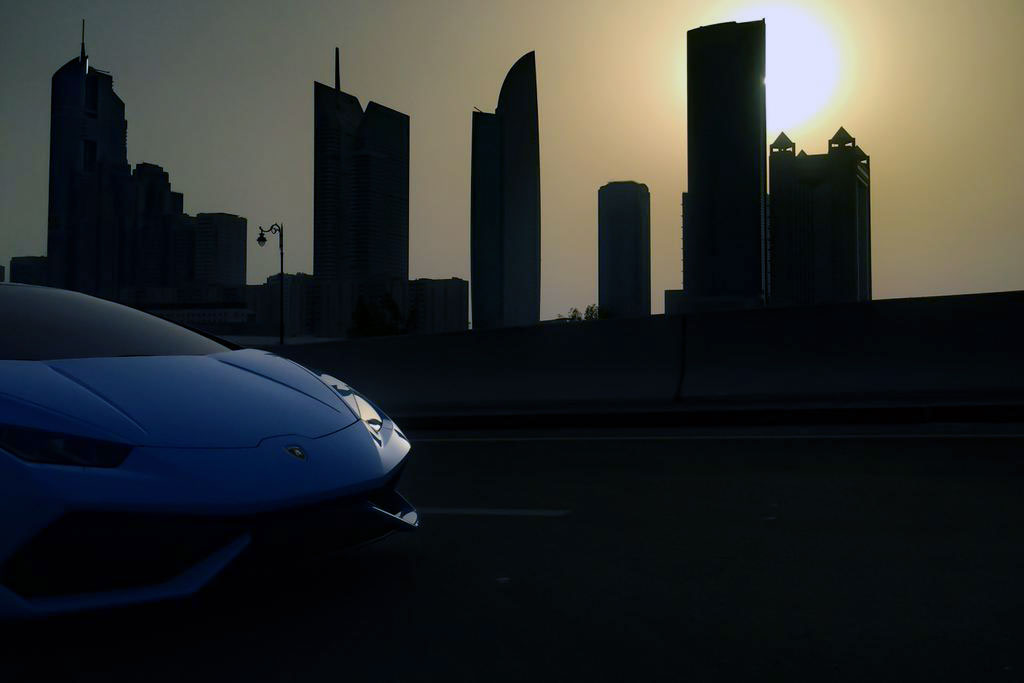The Lamborghini Huracán LP 610-4 has gone topless in time for the Frankfurt Motor Show.
The long-awaited Huracán Spyder gains an electrohydraulic cloth soft top that opens in 17 seconds, even at speeds of up to 31 mph. With the top down, the rear deck lid features two long fins that stretch from right behind the passenger compartment to the rear fascia, a styling cue that helps differentiate the Spyder from its coupe counterpart. The fins also direct additional cooling air into the engine bay.
Customization was high on Lamborghini’s list of priorities. The top can be ordered in black, brown or red, and the panel right above the windshield can be either left with the Huracán emblem or personalized. Additionally, buyers can choose from a palette of eleven paint colors and from several alloy wheel designs.
The interior is largely carried over from the Huracán coupe, though the Spyder boasts innovative ducts that reduce air turbulence in the cockpit, as well as removable lateral wind guards that let sun-worshipers to have a conversation even when the top is down. When small talk isn’t the order of the day, the rear window can be opened in order to let the engine’s symphony into the cabin, a feature borrowed from the larger Aventador Spyder.
Built out of a weight-saving combination of aluminum and carbon fiber, the Huracán Spyder’s chassis is 40% stiffer than that of the Gallardo Spyder, its predecessor. A fully flat underbody and a large air diffuser built into the rear bumper highlight the efforts that Lamborghini went through to make its newest convertible as aerodynamic as possible.
Lamborghini has not made any mechanical changes to the Huracán, meaning the Spyder carries on with a hand-built, naturally-aspirated 5.2-liter V10 engine that makes 610 horsepower at 8,250 rpm and 413 pound-feet of torque at 6,500 rpm. Bolted to a seven-speed dual-clutch automatic transmission that spins all four wheels via a new all-wheel drive system, the ten-cylinder sends the 3,400-pound Spyder from zero to 62 mph 3.4 seconds – 0.2 seconds slower than the coupe – from zero to 124 mph in 10.2 seconds, and on to a top speed of 201 mph.
Fuel economy checks in at 19 mpg in a mixed European cycle, which is remarkable for such a large engine. A start/stop system comes standard, and the Spyder ushers in the fuel-saving cylinder-on-demand technology that will be added to the Huracán coupe for the 2016 model year.
The Lamborghini Huracán Spyder is scheduled to go on sale in time for the 2017 model year. It will cost €186,450 (roughly $210,000) in its home country of Italy before taxes are factored in, though pricing information for the U.S.-spec model hasn’t been published yet.
